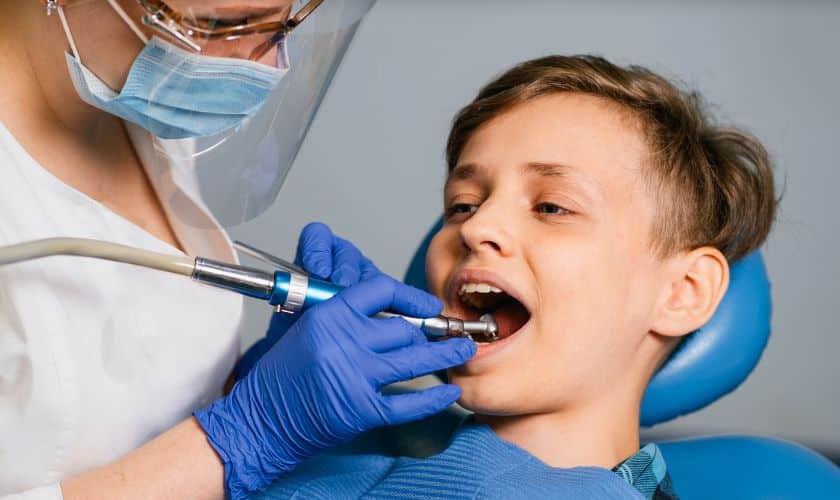A bright and healthy smile is a treasure that lasts a lifetime, and as a parent, you have the wonderful opportunity to teach your child the importance of maintaining their oral health. Instilling proper brushing and flossing techniques from an early age sets the foundation for a lifetime of good dental habits. In this guide, we’ll explore the steps and strategies to help you navigate the world of child dentistry and ensure your child’s dental care is a breeze.
1. Find a Friendly Pediatric Dentist
Before you dive into teaching dental care to your child, consider finding a pediatric dentist who specializes in treating children. A pediatric dentist’s office is often designed to create a comfortable and welcoming environment for young patients, helping to set a positive tone for their dental experiences.
2. Make Dental Care a Fun Routine
Engage your child’s interest by making dental care feel like an exciting routine rather than a chore. Let your child pick out a colorful toothbrush with their favorite character or color. Consider playing their favorite song as a two-minute timer for brushing – this will make the time fly by and keep them engaged.
3. Lead by Example
Children often learn best by watching and imitating their parents. Let them see you practicing good oral hygiene by brushing and flossing regularly. When they observe your commitment, they’ll be more likely to follow suit.
Source: American Dental Association (ADA)
4. Choose the Right Dental Products
Select toothpaste with fluoride that’s appropriate for your child’s age. Fluoride helps prevent tooth decay and strengthen enamel. Ensure the toothbrush has soft bristles to protect their sensitive gums, and remember to replace it every 3 to 4 months, or sooner if the bristles fray.
5. Teach the Correct Brushing Technique
Show your child the proper brushing technique by holding the toothbrush at a 45-degree angle to the gums. Use gentle circular motions to clean the front, back, and top of each tooth. Encourage them to brush for at least two minutes to ensure a thorough clean.
6. The Flossing Fundamentals
Flossing might seem tricky, but it’s essential for reaching areas between teeth that a toothbrush can’t. Use child-friendly flossers to make the process easier. Show your child how to gently slide the floss between their teeth, forming a C shape to hug each tooth and remove debris.
7. Turn it into a Story
Create a fun narrative around brushing and flossing to make it engaging. Maybe your child is a superhero battling “plaque monsters” or a brave explorer journeying through a “cave of clean teeth.” These imaginative stories can make dental care an adventure.
8. Set a Schedule
Establish a consistent routine by brushing and flossing together at the same times each day. Morning and before bedtime are ideal moments. Consistency helps reinforce the habit and makes it an integral part of your child’s daily routine.
9. Offer Positive Reinforcement
Praise your child’s efforts in maintaining their oral health. Positive reinforcement can include small rewards or simply verbal encouragement. Celebrate milestones such as their first solo brush or a cavity-free dental visit.
10. Regular Dental Check-ups
Schedule regular appointments with the pediatric dentist to monitor your child’s oral health. These visits help catch any potential issues early and allow your child to become familiar with dental check-ups as a normal part of life.
By turning dental care into a fun adventure, offering positive reinforcement, and leading by example, you can teach your child the importance of proper brushing and flossing techniques. With your guidance and a friendly pediatric dentist’s support, your child will develop strong dental habits that will serve them well into adulthood. Remember, a healthy smile is not just a reflection of good dental care; it’s a reflection of the love and care you invest in your child’s overall well-being.

